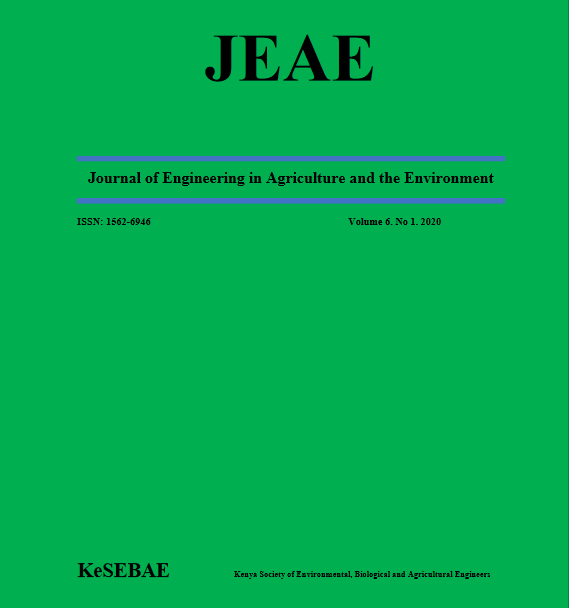Abstract
Six bagasse based activated carbons were evaluated for efficiency in the level of decolorization sugar syrup. The effect of activated carbon dosage in the range 0.2 –1.0 g per 100 ml syrup was determined. Test samples of syrup 63.0 Brix were diluted, adjusted to pH 7.0 using 0.1M HCl and Thymol Blue as buffer. The absorbance reading at 420 nm was taken by a Hitachi U-3200.Spectrophotometer using a 10 mm cell. Samples of 100 g of syrup were placed in a water-bath at 80 0C shaken at 160 rpm, then activated carbon was added to each sample. At the end of 20 min, samples were removed and filtered through a Buchner plastic funnel containing a Whatman filter paper. About 1% of kieselguhr was added to the filtrate. Filtrates containing filter aid were moderately shaken on a water bath and heated until they reached 70 0C. The samples were then filtered through a membrane filtration assembly. The filtrates were passed through a 0.45 nm membrane. then their pH, and absorbance where measured. A blank containing the test syrup only was subjected to the same experimental conditions. The results were evaluated for the effectiveness for percent color removal from sugar syrup and compared with the two commercial activated carbons. The color removal capabilities of carbons were measured at 1/100 (w/w) dosage, and isotherms were determined. The results showed activated carbons from bagasse activated for 5h at a temperature of 600 0C possess the necessary characteristics, similar to commercial carbons for sugar refining and therefore an inexpensive precursor for AC.
References
Miranda, M.P., 2002. Removal of colored compounds from sugar solutions by adsorption onto anionic resins: equilibrium and kinetic study. Sep Purif. Technol.29, 199–205.
Ahmedna, M., Clarke, S. J., Marshall. W.E., Rao R. M. Johns, M.M., (1997b). Potential of agricultural by-product-based activated carbons for use in raw sugar decolorization. J. Sci. Food Agric. 75, 117-124
Ahmedna, M., Marshall, W.E., Rao, R.M., (2000). Granular activated carbons from agricultural by products: Preparation, properties and application in cane sugar refining. Bulletin No. 869, Louisiana State University Agricultural Centre, pp 6
Arunee Simaratanamongkol, Paitip Thiravetyan 2010. Decolorization of melanoidin by activated carbon obtained from bagasse bottom ash. Journal of Food Engineering 96 (2010) 14–17
Balcı, S., Doğu, T. And Yücel, H., “Characterization of Activated Carbon Produced from Almond Shelland Hazelnut Shell”, J. Chem. Tech. Biotechnol. Vol.60, pp.419-426. (1994)
Bansal, R.C., J.B. Donnet, and F. Stoeckli., (1988). Active Carbon, Marcel Decker, New Yorke. 482 p
Bernardin, Jr., F.E. (1985). Experimental design
and testing of Adsorption and adsorbates. Ch. 1
In Adsorption Technology A Step- by- step Approach to Process Evaluation and Application. Chemical Industries 19. F.L. Sleijko (ed). p. 37- 90. Marcel Dekker, Inc. N.Y.
Boehme H.P., (1994). Some aspects of the surface chemistry of carbon blacks and other carbons: Carbon 32 (5), 759-769.
Carpenter, F.G. (1985). Cane sugar refining II.Ch.17. Cane Sugar Handbook. Eleventh edition. Chen, J.C.P. (ed). John Wiley & Sons, New York
C¸elebi, I_., Kincal, N.S., 2007. Color formation in wheat starch-based glucose syrups and use of commercially available and laboratory- prepared agricultural waste-based activated carbons for decolorization. Sep. Sci. Technol. 42, 1761–1773
Clarke, M A., Godshall M. A., Blanco, R. S., (1984). Color test and other indicators of raw sugar refining characteristics. Proc.1984, Sugar Processing Research Conference. New Orleans, LA
Devnarain P.B., Arnold D.R., Davis S.B., 2002. Production of Activated Carbon from South African Sugarcane Bagasse. Proceedings from South African Sugar Technologists Association, 2002, 76.
Dubinin, M.M., (1987). Adsorption properties and microporous structures of carbonaceous adsorbents. Carbon 25 (5), 593-598
Faust, S. D. and Aly, O. M. Chemistry of Water Treatment, Butter Wort Pub., Woburn. (1983)
Girgis, B.S., L.b. Khalil, and T.A.M. Tawfik., (1994). Activated carbon from sugarcane bagasse by carbonization in the presence of in organic acids J. Chem. Technol. Biotechnol. 61 (1), 87-92.
Godshall, M.A., (1997). Symposium on Sugar Color SIT., Part two Color Analysis SIT, Vol. 46 pp.193-211
Hakan Demiral, İlknur Demiral, Belgin
Karabacakoğlu, (2010). Production of activated carbon from olive bagasse by physical activation
Chemical Engineering Research and Design.
Volume 89, Issue 2, Pages 206–213
Hasan Arslanoglu and Fikret Tumen (2012). A study on cations and color removal from thin sugar juice by modified sugar beet pulp. J. Food Sci. Technol. 2012 49(3), 319-327
Khadija, Q., Inamullah, B., Rafique, K., Abdul, K. A., (2007). World Academiy of Science, Engineering and Technology 34.
Sevilla, M A.B. Fuertes, A.B., (2009). The production of carbon materials by hydrothermal carbonization of cellulose Carbon Volume 47, Issue 9, Pages 2281-2289.
Sevilla Marta and Antonio Fuertes, B. (2011). Sustainable porous carbons with a superior performance for CO2 capture Issue 5, 2011. DOI: 10.1039/C0EE00784F
Nadeem R, Hanif M.A, Sheen F, Perveen S, Zafar M.N, Iqbal T. Physical and chemical modification of distillery sludge for Pb (II)
BIsorption. J. Hazard Mater 150 (2008) 335-3342
Nick, J.B., (1992). A review of physical and chemical properties of char, which affect its decolorizing ability Proc.51 Annual Meeting of Sugar Industry. Technologists Inc., Brussels, Belgium
Niraj S. Topare, Shruti G. Chopade, Satish Khedkar, V.C Renge, S.L Bhagat. Production of activated carbon from sugarcane bagasses. International Journal of Advanced Engineering Technology. Vol.II/IssueIII, July-September, 2011 356-358
Paton, N. H., P. and Smith. (1983). Colorants adsorption in refinery. Int. Sugar J. 85 (1013), 139.
Ozmihci S, Kargi F, (2006). Utilization of powdered waste sludge (PWS) for removal of textile dyestuffs from wastewater by adsorption, J. Environ. Manage. 81. 307-314
Ruthven, D. M., (1984). Principle of Adsorption and Adsorption Process, John Wiley and Sons, New York,
Suescún-Mathieu, E. Andrea Bautista-Carrizosa, Rocio Sierra, Liliana Girado, Juan Carlos Moreno-Piraján 2014. Carboxylic acid recovery from aqueous solutions by activated carbon produced from sugarcane bagasse. Adsorption,
Volume 20, Issue 8, pp 935-943

This work is licensed under a Creative Commons Attribution 4.0 International License.
